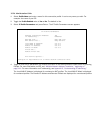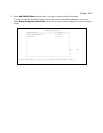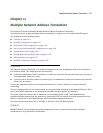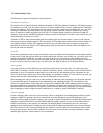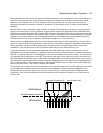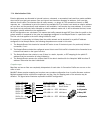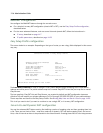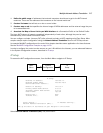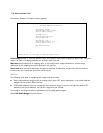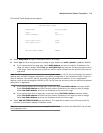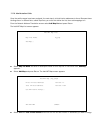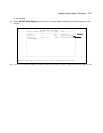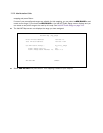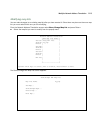
11-6 Administration Guide
MultiNAT Configuration
You configure the MultiNAT features through the console menu:
■ For a simple 1-to-many NAT configuration (classic NAT or PAT), use the Easy Setup Profile configuration,
described below.
■ For the more advanced features, such as server lists and dynamic NAT, follow the instructions in:
■ IP setup, described on page 11-7
■ IP profile parameters, described on page 11-23
Easy Setup Profile configuration
The screen below is an example. Depending on the type of router you are using, fields displayed in this screen
may vary.
The Local WAN IP Address is used to configure a NAT public address range consisting of the Local WAN IP
Address and all its ports. The public address map list is named Easy-PAT List and the port map list is named
Easy-Servers.
The two map lists, Easy-PAT List and Easy-Servers, are created by default and NAT configuration becomes
effective.This will map all your private addresses (0.0.0.0 through 255.255.255.255) to your public address.
These map lists are bound to the Easy Setup Profile. See Binding Map Lists and Server Lists on page 11-23.
This is all you need to do if you want to continue to use a single PAT, or 1-to-many, NAT configuration.
Server Lists and Dynamic NAT configuration
You use the advanced NAT feature sets by first defining a series of mapping rules and then grouping them into
a list. There are two kinds of lists -- map lists, made up of dynamic, PAT and static mapping rules, and server
lists, a list of internal services to be presented to the external world. Creating these lists is a four-step process:
Connection Profile 1: Easy Setup Profile
Address Translation Enabled: Yes
IP Addressing... Numbered
Local WAN IP Address: 206.1.1.6
Local WAN IP Mask: 255.255.255.0
Remote IP Address: 127.0.0.2
Remote IP Mask: 255.255.255.255
PPP Authentication... PAP
Send User Name: tonyf
Send Password: ********************
PREVIOUS SCREEN NEXT SCREEN
Return/Enter brings you to next screen.



